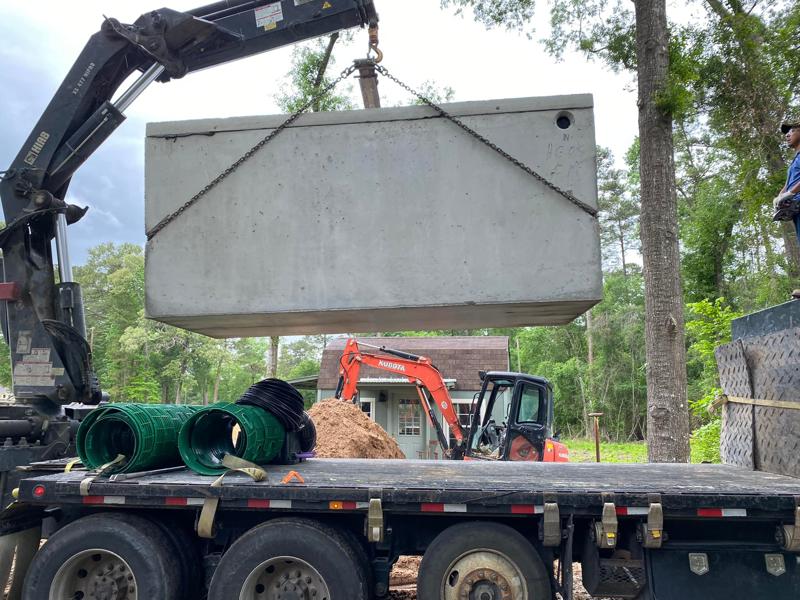Septic System Install
"Septic system installation made simple!"
Looking for a reliable septic system install service in Houston, Cypress, Hockley, Waller, Grimes, Magnolia, or Montgomery County? Look no further than Strictly Septic Service. Our team of licensed professionals has years of experience in the field and offers efficient and effective installation that meets all necessary codes and regulations. Trust us to provide top-notch service and results for all of your septic system installation needs.


Step 1
Site Evaluation
The first step is to evaluate the site where the septic system will be installed. This includes assessing soil type, slope of the land, proximity to water sources, and other environmental considerations.
Step 2
Septic Permits
Once the site has been evaluated and deemed suitable, necessary permits and approvals must be obtained from local authorities. This is an important step of a septic system install and cannot be overlooked. Learn more about obtaining a septic permit in Texas.
Step 3
Excavation
The excavation process involves digging a hole for the septic tank and a leach field area (depending on type of septic system being installed). The size of the hole will depend on the size of the septic system required.
Step 4
Septic Tank Installation
The septic tank is then installed in the excavated hole. The tank is typically made of concrete, fiberglass, or plastic and is designed to hold wastewater while allowing solids to settle to the bottom and oils and grease to rise to the top.
Step 5
Inlet & Outlet Connections
Once the septic tank is in place, inlet and outlet connections are installed. These connections connect the septic tank to the plumbing system of the house. Typically new drain pipes are installed from home to new septic tank.
Step 6
Leach Field Installation
The leach field is then installed, typically consisting of a series of perforated pipes laid in trenches filled with gravel and covered with soil. The leach field allows the wastewater to be gradually filtered and absorbed into the soil. Some systems do not require a leach field. Note: Some septic system install projects do not require a leach or drain field.
Step 7
System Testing
After installation, the septic system must be tested to ensure that it is functioning properly. This includes checking the flow rate, making sure the leach field is properly filtering wastewater, and checking for leaks or other issues.
Step 8
Final Inspections
Once the system is tested and approved, final inspections and approvals must be obtained from local authorities to ensure that the septic system meets all necessary codes and regulations.
Step 9
Reclamation
The next step after obtaining final approvals and inspections for the septic system is reclamation. This involves restoring the site to its original state, including backfilling the excavated areas, reseeding the disturbed soil, and restoring any other areas that were affected during the installation process.
Step 10
Ongoing Maintenance
Once the septic system is installed, ongoing maintenance is required to ensure that it continues to function properly. This includes regular pumping of the septic tank and inspections of the system to check for any issues or necessary repairs.

